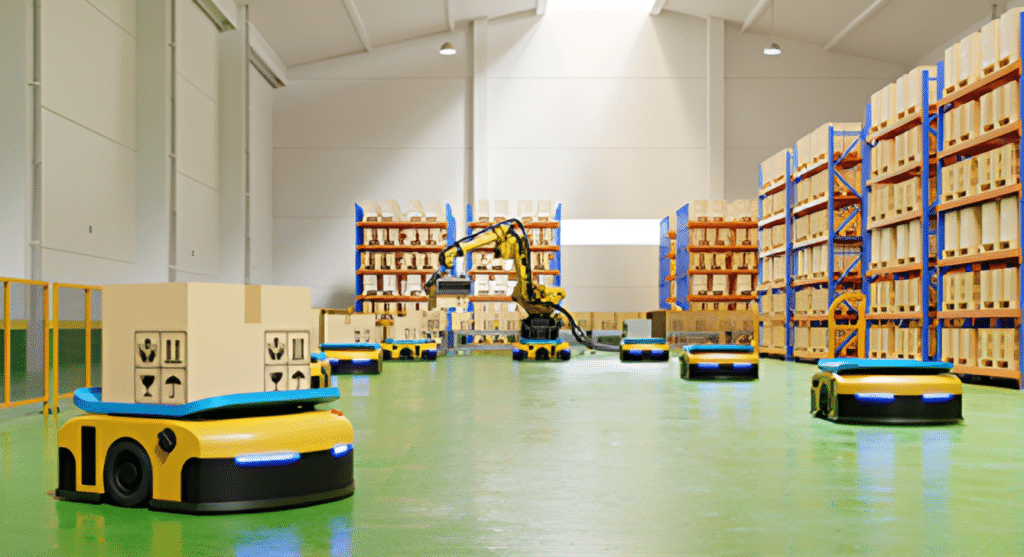Empowering Warehouses with Intelligent Automation

Traditional warehouse logistics demands heavy manpower. Workers spend hours moving goods across vast spaces, which not only increases labor costs but also raises safety concerns such as collisions, fatigue, and injuries.
Smart logistics replaces repetitive manual work with autonomous robots. Equipped with advanced sensors, robots can avoid collisions, optimize travel paths, and streamline picking and loading tasks. By integrating AI and IoT technologies, warehouse robots ensure continuous, efficient, and safer operations—directly managed through centralized control systems.
| Category | Traditional Warehouse | Smart Logistics |
|---|---|---|
| Labor | Heavy reliance on manual work. | AMRs reduce manpower and redeploy staff to high-value tasks. |
| Efficiency | Limited by shifts and human pace. | 24/7 operation with optimized routing and task allocation. |
| Safety | Higher risk of collisions and injuries. | Sensors + AI drive collision avoidance and safe speeds. |
| Management | Manual supervision and ad-hoc scheduling. | Central command, live telemetry, fleet orchestration. |
| Data | Minimal tracking; hard to optimize. | AIoT data loop enables continuous improvement. |
| Flexibility | Slow to adapt to demand spikes. | Dynamic path planning and rapid scaling. |
To accelerate smart warehouse deployment, Portwell introduces the WUX-4200, a compact embedded system based on the NUC form factor (101.6 x 101.6 mm).
AI-Ready Performance – Seamlessly integrates AI inference modules for real-time decision-making.
Rich I/O & Expansion – Supports eMMC for onboard storage and USB for external sensors such as infrared, Bluetooth, and gyroscopes.
Optimized Robot Integration – Enables precise navigation, location tracking, and motion control, making warehouse robots smarter and more autonomous.